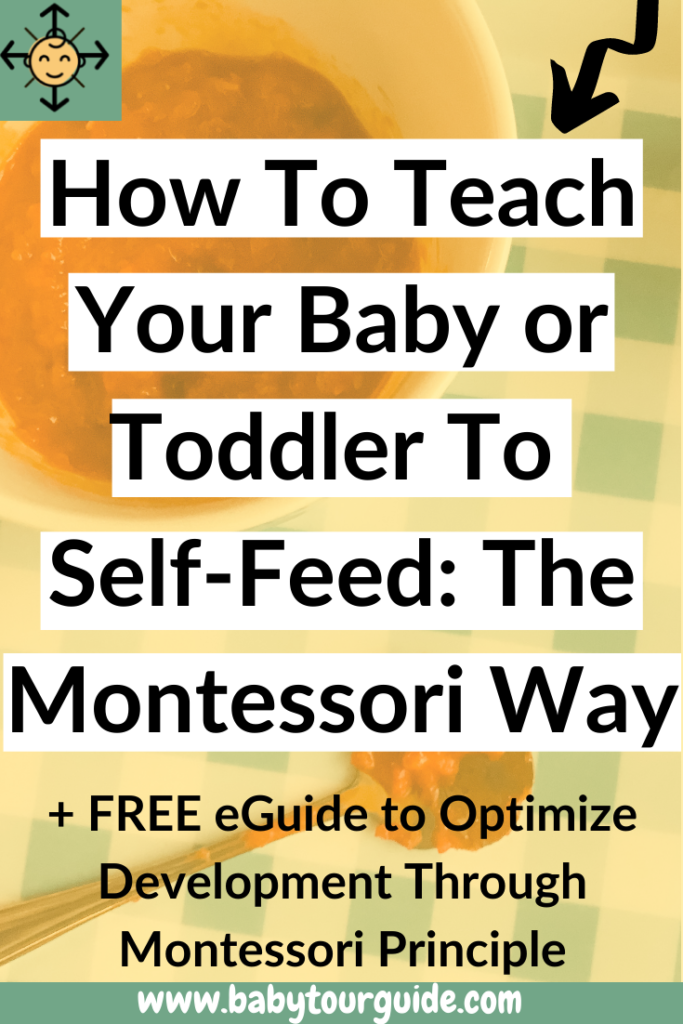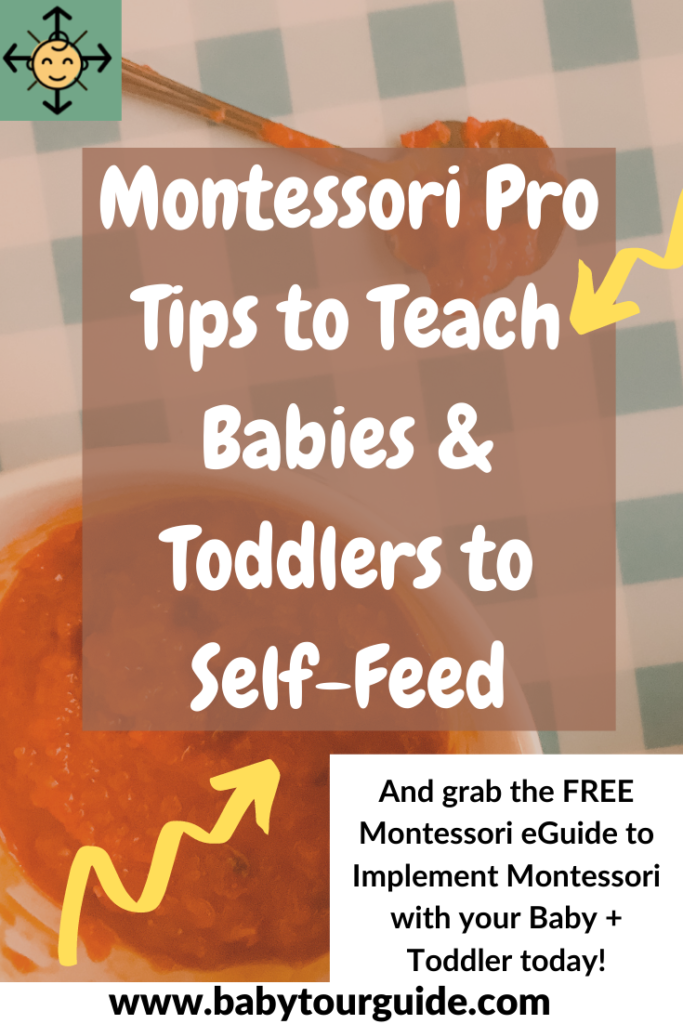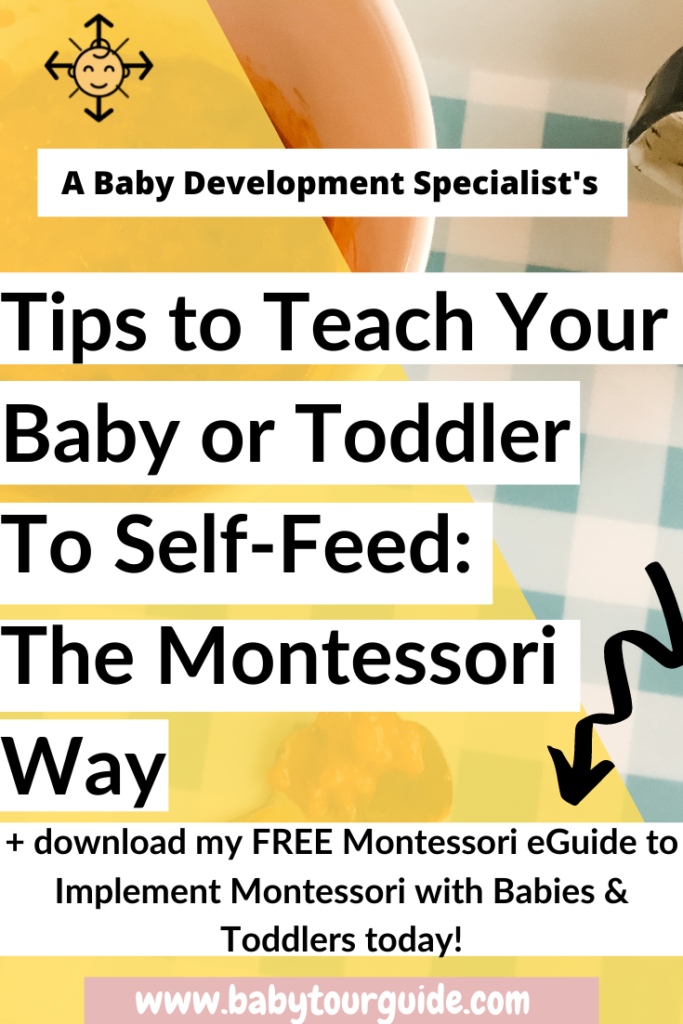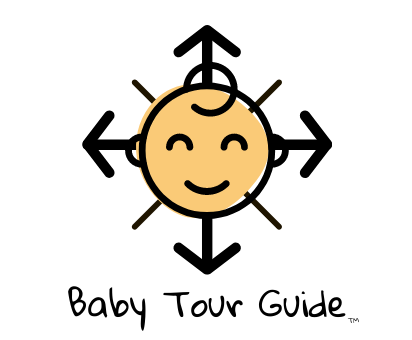If you have a baby or toddler who is eating solid foods but has yet to learn how to self-feed, this post is definitely for you!
So here’s a thought to start, each child’s self-feeding journey is such a fun (and messy) process!
That said, as per usual I want you to consider that each child’s journey to self-feed is completely their own. One child may be completely self-driven to self-feed, whereas others may need a tad more enticing to get to the point to even grabbing food and bringing it to their mouth. And each journey is equally as beautiful!
The age of your child also definitely matters to the approach that we take when helping our kids learn to self-feed. So below I mapped out how to introduce self-feeding based on where the child is at in their journey.

Teaching Babies to Self-Feed While Introducing Solids
This would be for our tiny babies who are just beginning their solid food journeys. These sweet babies, typically around 6 months, are making new connections about their food experiences and building their relationships to food + feeding from scratch.
Pro Tip: It is typically easiest for babies to learn to self-feed as a formed eating relationship from the beginning, rather than trying to build it once they have an idea about what their feeding experience is.
That is, depending on the child. Every child is different and some have no trouble transitioning into something new, whereas others have a stronger sense of order and take a bit longer to implement something new.
So to teach babies to learn to self-feed from the beginning, it depends on the manner in which you plan to introduce foods.
One style of solid-food introduction is baby-led weaning. This means offering the whole food for the child to grab and put to their mouths from the beginning.
It is quite easy to teach babies to self-feed with this process because it is led by the child. So if you essentially place the whole food on the baby’s tray or table and wait for the child to grab it, they will be on their self-feeding journey from day one!
For some babies, you may need to either model how to eat the food or bring it to their mouth for them to taste if they don’t seem to be doing so themselves. (It is a new experience, so your baby may just explore the food with their hands initially. Also totally normal!)
After your baby recognizes that this process is a regular part of their day, and they get new and exciting foods to try, they will just continue to bring the foods to their mouth. And there they are! Self-feeding from the start!

- Starting Babies on Purees
Starting babies on blended food is also a very common style of solid-food introduction! To begin teaching your baby to self-feed with this style, it is a little bit less obvious than the baby-led weaning approach.
Our instinct is to feed our baby. So we naturally and lovingly will scoop some of the puree onto the baby spoon and bring it to our baby’s mouth to offer them a taste. And that habit commonly continues as the child continues on his journey.
The way to offer self-feeding experiences while introducing food via purees is to get your baby involved as much as possible. So for example, perhaps let them grab the spoon and bring it to their mouth for that very first bite. Or once you offer a bite, perhaps place the next spoonful on their tray or table in front of them to see what they do.
Teaching Babies to Self-Feed Who Already Eat Food
So this next part is for those whose babies already have a relationship with food and have yet to learn to feed themselves. Perhaps they refuse to feed themselves or perhaps they love to have you feed them as a part of their sense of order, otherwise known as what they’ve come to known their feeding experience as thus far.
Whatever the reason for their will to have you feed them, or refuse all together, it’s okay! With time and consistency, they will learn and practice self-feeding.
Every child is so beautifully different. So the approach we take may be unique to each baby. But remember, the earlier you start to practice, the sooner they will learn.
- For babies who love to be fed
These babies likely just love to have that connected experience with you during that feeding process! And so I would continue to offer that connected experience, but offer opportunities for self-feeding practice.
Pro Tip: The #1 Way we can help them learn to self-feed if they already have a relationship with the feeding experience is to model.
This is how I’ve had success with babies who love to be fed…
Get two of the same feeding spoon, dip one spoon into the food and take a bite while your baby is watching. Talk about what you’re doing too! Then dip the other spoon and place it on their tray or table. And see what they do. Continue to do things just like this where you are modeling how you feed yourself, and they eventually will try the same.

- For babies and toddlers who refuse to grab the spoon/food but love to eat
I have worked with plenty of babies who love to eat but refuse to hold the spoon or grab the food on the tray/table in front of them. These babies are so funny! They likely have a strong will and sense of order about their feeding process.
Pro Tip: I suggest offering the first bite to the child so they taste the food. Then once they realize it’s yummy and they want more, dip the spoon (or place the whole food) on their table or tray and see what they do.
Modeling and Sportscasting also really help in this instance because they will get to learn that their mommy, daddy, teacher, or caregiver feed themselves.
And they will be far more likely to try for themselves when they see you feeding yourself, and more-so feeding yourself with the same food they are eating.
And finally….
Good luck! Your baby or toddler will eventually learn to feed themselves, and the modeling + teaching that you are offering to your sweet baby is an amazing first step! Let me know if you try any of these tips in the comments below!
Xoxo,
Bianca, Your Baby Tour Guide

Some truly good articles on this internet site , appreciate it for contribution. Ailene Darrel Jobe
Thank you Ailene! 🙂